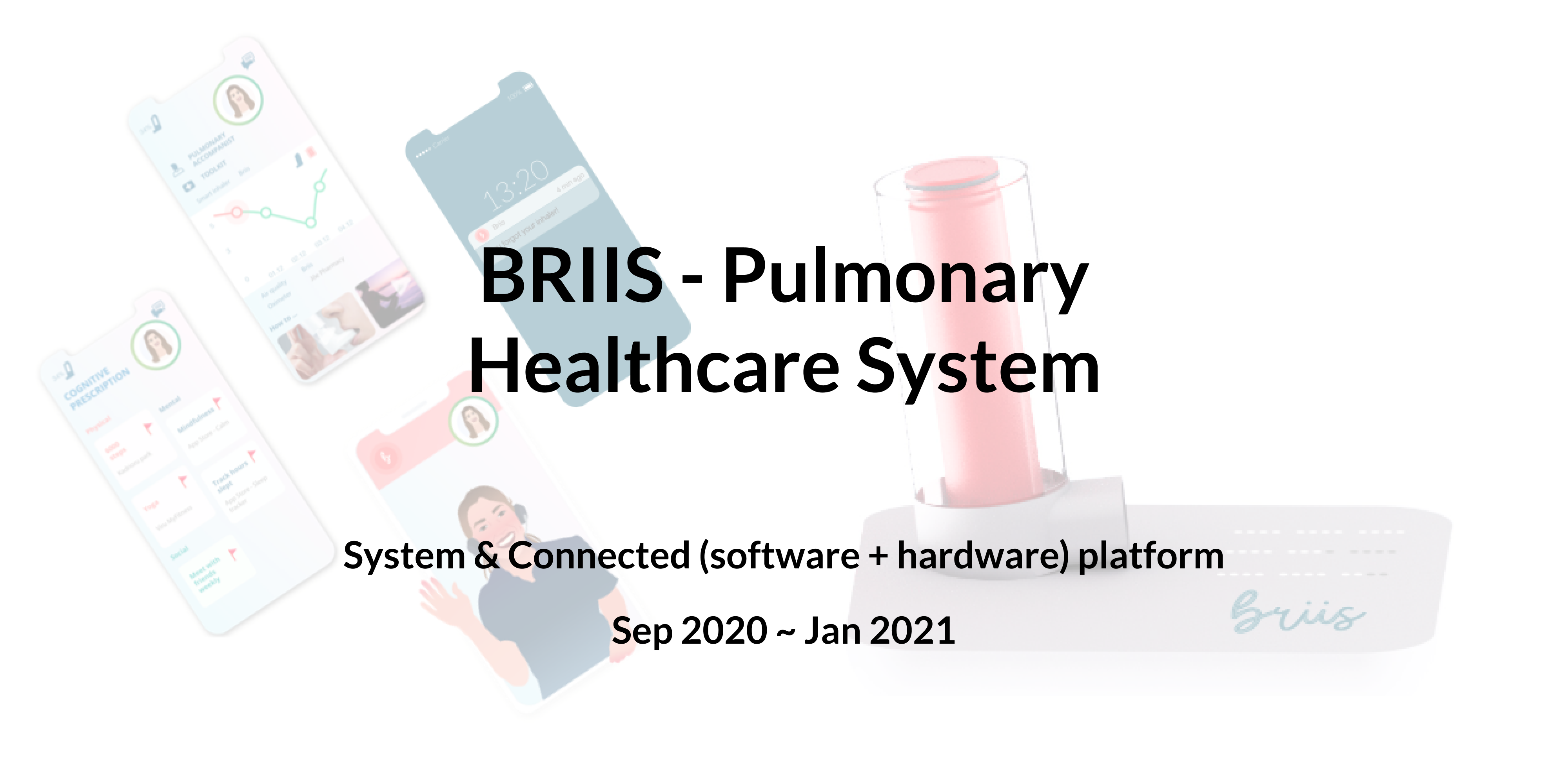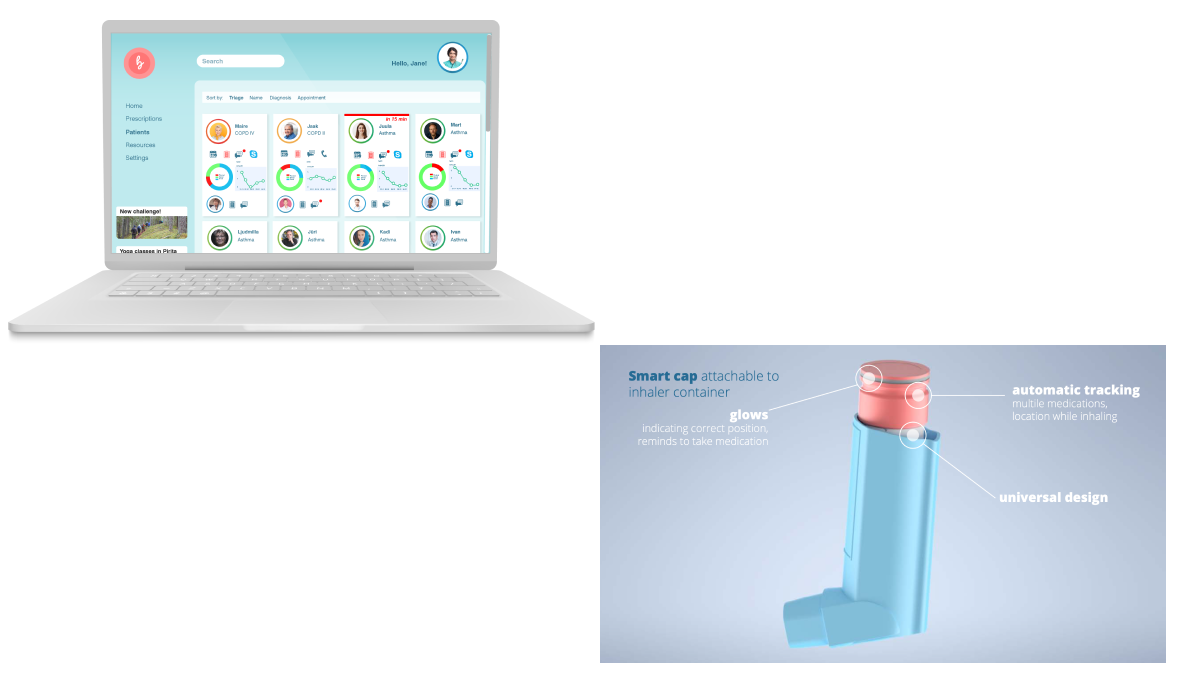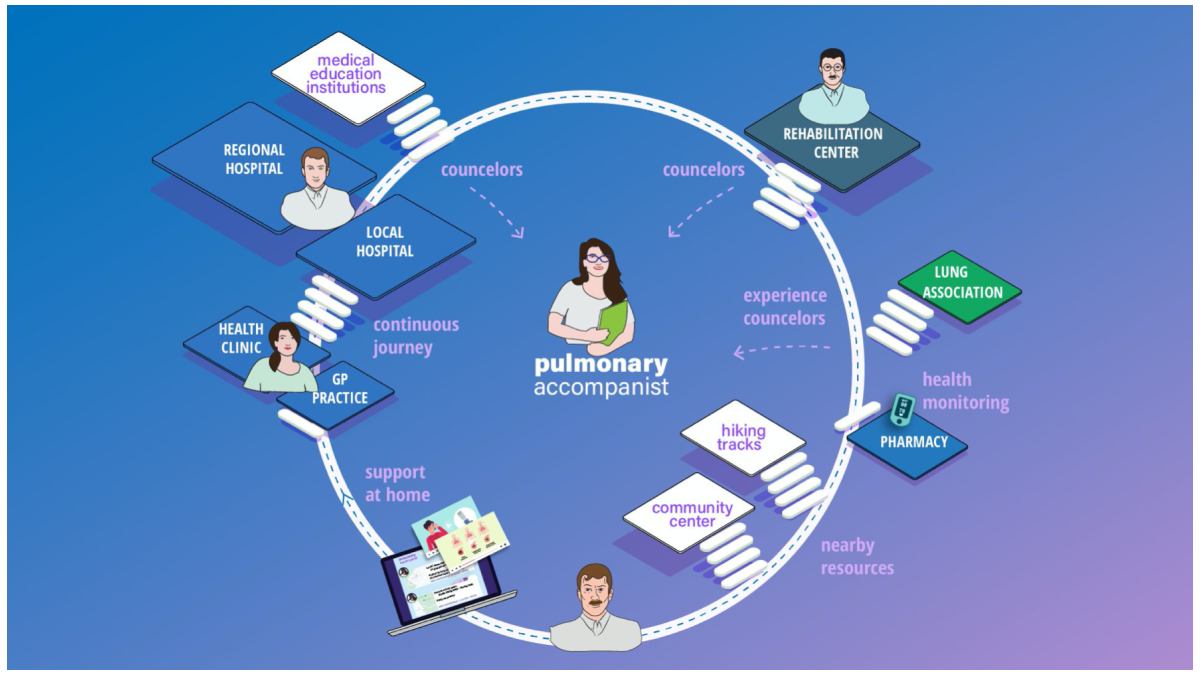

This is a 21-week academic project where the design team from Tallinn University of Technology has collaborated with PERH (North Estonia Medical Center) to create a system which addresses issues of pulmonary patients and strengthen the rehabilitation system in Estonia.
Strategic Design
I've taken initiative in contextual research, internal brainstorming, workshop design/execution, sketching/wireframing, and project documentation in collaboration with the interdisciplinary team.
We started from desktop research to understand diseases and rehabilitation in pulmonology, and to formulate the hypothetical questions and patient journey map.
And we’ve conducted an online interview with a pulmonary physician and a physiotherapist to understand the medical professional’s point of view.
Also, we create a cultural probe to gain the patient’s subjective points of view more deeply.
After defining issues (isolated patients & fragmented system), we conducted 2 co-design workshops as well as internal brainstorming.
The first one focused on having a deeper understanding of problem space from patient’s and expert’s points of view. It helped us to create a hypothetical concept which was tested in the second workshop based on a roleplay prototyping game.
It opened up more design opportunities in new profession, connected device, and digital platform.

BRIIS is a platform that helps patients with chronic lung disease to gain consistent support, acknowledge the local resources, and keep their symptoms maintained by qualified pulmonary accompanists providing cognitive prescription including physical, mental, social activities and pulmonary toolkit.

After defining the concept details, we started focusing on prototyping the concept and decide to prototype these main elements:
After realizing the necessity of clarifying the user story on BRIIS, more precise user stories, values, and an implementation plan were also created and evaluated.
Patients are provided with a consistent and personalised support. Additionally, public awareness is raised about the local resources, exacerbation reduced and help provided before they end up severely ill.
Medical system gains transparency by connecting different professionals, workloads are reduced. Physiotherapy curriculum could include a practical course working as a pulmonary accompanist to pulmonary patients. Strong brand identity helps to raise public awareness.
